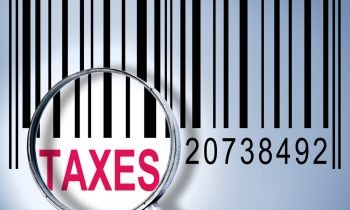Introduction
B2B returnable packaging is a type of packaging that can be reused multiple times. This type of packaging is often used for shipping products between businesses, as it can help to reduce costs and waste. Returnable packaging can be made from various materials, such as plastic, metal, or cardboard, and can be designed to meet the specific needs of the product being shipped.
B2B (business-to-business) returnable packaging allows products to be placed in containers that can easily be reused multiple times before they are returned to the supplier. This packaging is used to package perishable products such as food or beverages. It can also be used for items that are often returned such as electronic equipment. Businesses can save money on returnable packaging by reducing their waste and increasing efficiency.
Learn more about Why the B2B Returnable Packaging Market is Thriving
This industry’s growth is due to consumers’ growing awareness of environmental issues and the rising demand for sustainable packaging solutions. In 2018, the automotive industry was the most prominent sector in global B2B returnable packaging. Food industry and electronic industries followed closely. In 2018, North America was the most important market, followed by Europe and Asia Pacific. These products are more expensive than expendable packaging, but with increased trips, it is possible to get a lower price per trip, which guarantees a quick return on your investment.
Due to increasing product demand from different end-use industries, the U.S. industry will experience significant growth. The U.S.’s key food, beverage, pharmaceutical, and automotive companies are increasingly adopting sustainable business practices. This will increase the industry’s growth in returnable packaging. Because of their economic and ergonomic advantages, key companies are attracted to the sustainability and economic benefits of returnable packaging products. The main economic benefits are a lower cost per trip over the long-term and a decrease in costs associated with disposal and purchase of expendable packaging.
Suggested Reading: Increasing Popularity of Plastic Aseptic Packaging
The benefits of using B2B returnable packaging
B2B returnable packaging is an efficient and cost-effective way to transport goods between businesses. Returnable packaging can be used for a variety of products, including food, beverages, and industrial materials.
There are many benefits of using B2B returnable packaging. First, returnable packaging is more durable than single-use packaging, which means that products are less likely to be damaged during transportation. Second, returnable packaging can be reused multiple times, which reduces waste and saves money. Third, returnable packaging is often easier to store than single-use packaging, as it can be stacked or nested. Finally, using returnable packaging can help businesses build brand loyalty by demonstrating a commitment to sustainability.
The challenges of B2B returnable packaging
B2B returnable packaging is a type of packaging that can be returned to the supplier or manufacturer after use. This type of packaging is often used for products that are shipped frequently or in large quantities. While B2B returnable packaging can be beneficial for companies, there are also some challenges that come with using this type of packaging.
One challenge of B2B returnable packaging is that it can be expensive. This type of packaging often requires special materials and construction in order to be durable enough to withstand multiple uses. Additionally, return shipping costs can add up over time, especially if the packaging needs to be shipped back to the supplier or manufacturer from different locations.
Another challenge of B2B returnable packaging is that it can be difficult to track and manage.
Conclusion
B2B returnable packaging is an essential part of the supply chain for many industries. By using returnable packaging, businesses can save money on packaging and shipping costs, while reducing environmental impacts. Returnable packaging can also improve customer satisfaction by ensuring that products arrive safely and undamaged.Related items to read: Anti-counterfeit Packaging, Intravenous Product Packaging, and Transparent Barrier Packaging Film



